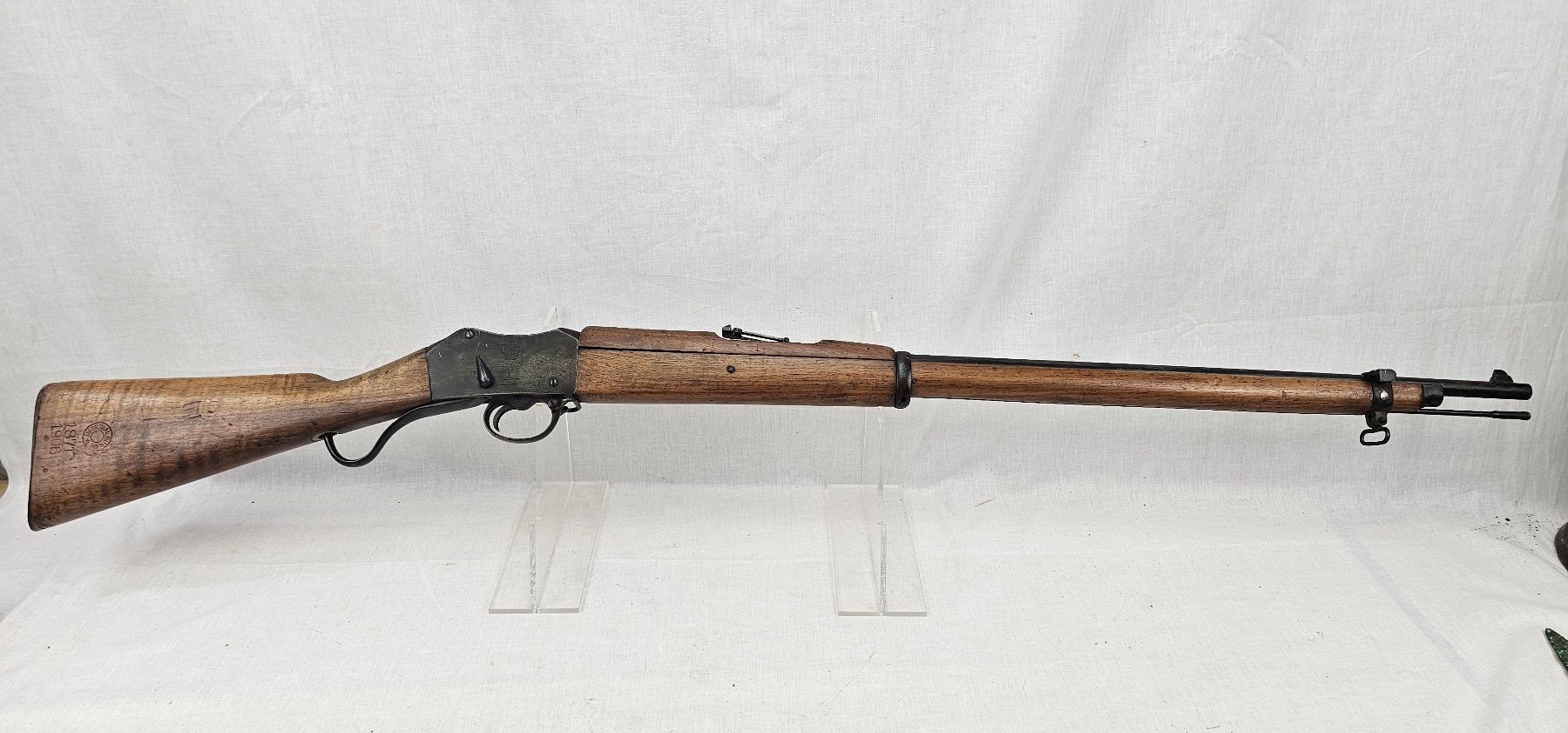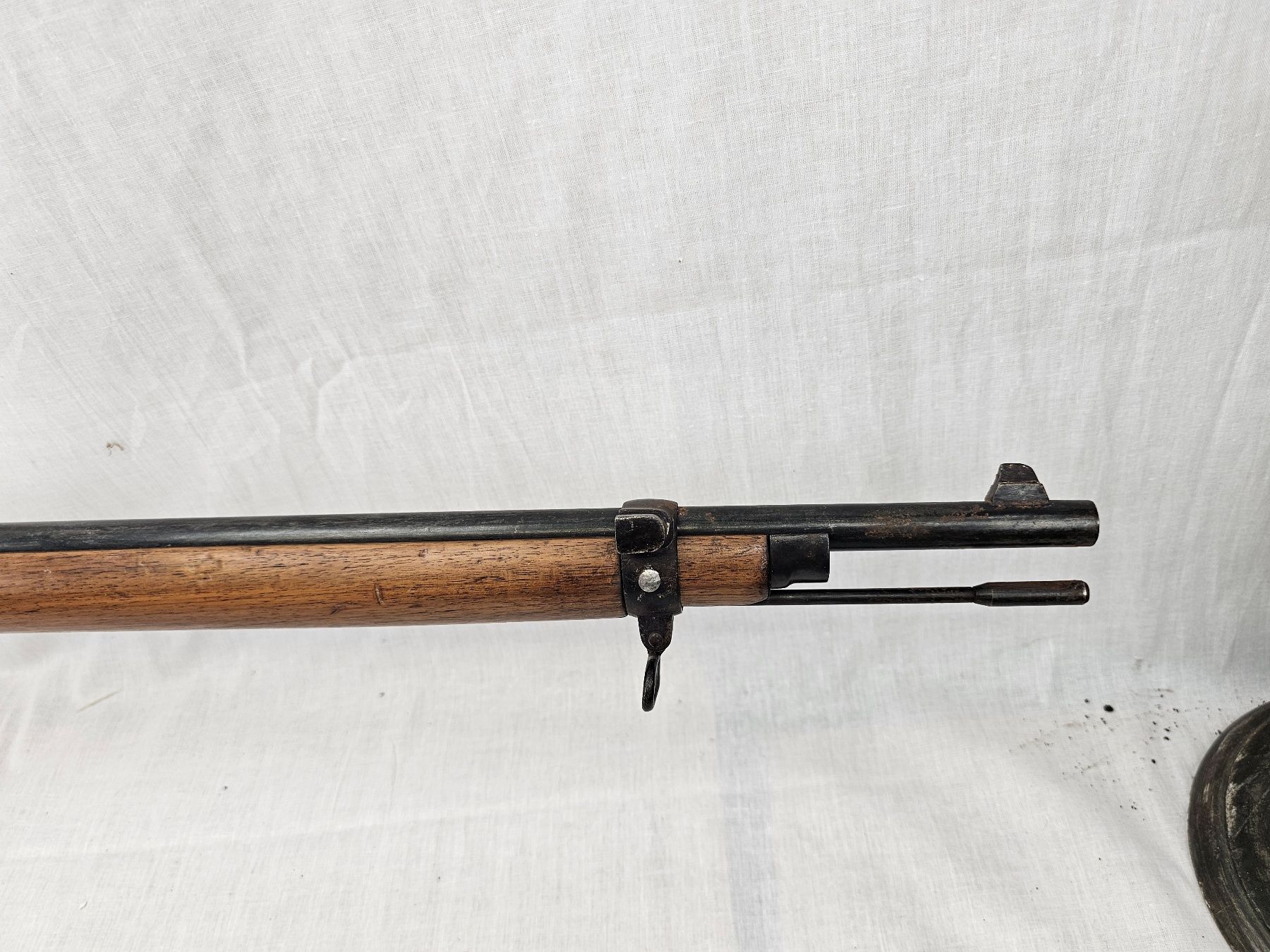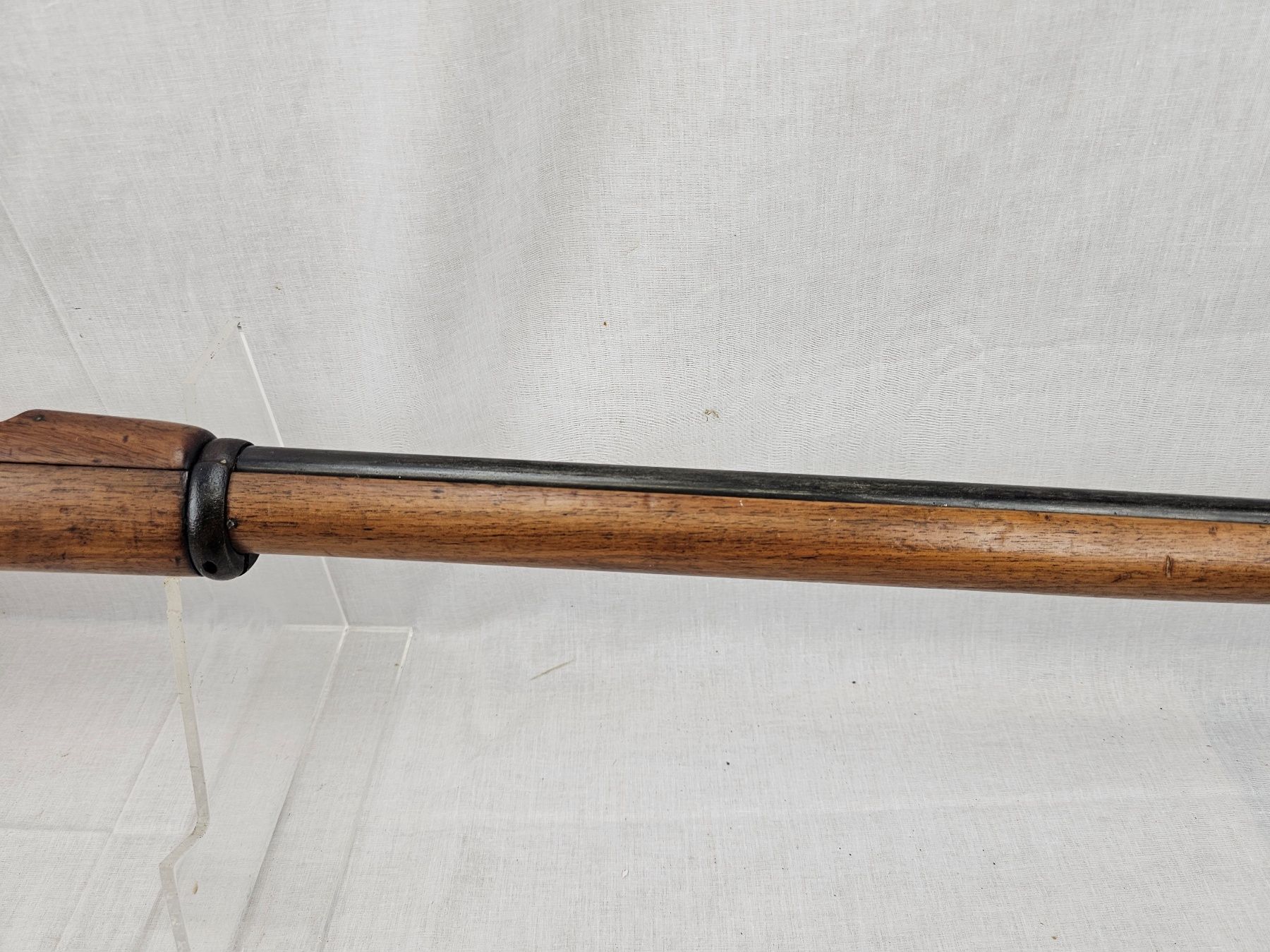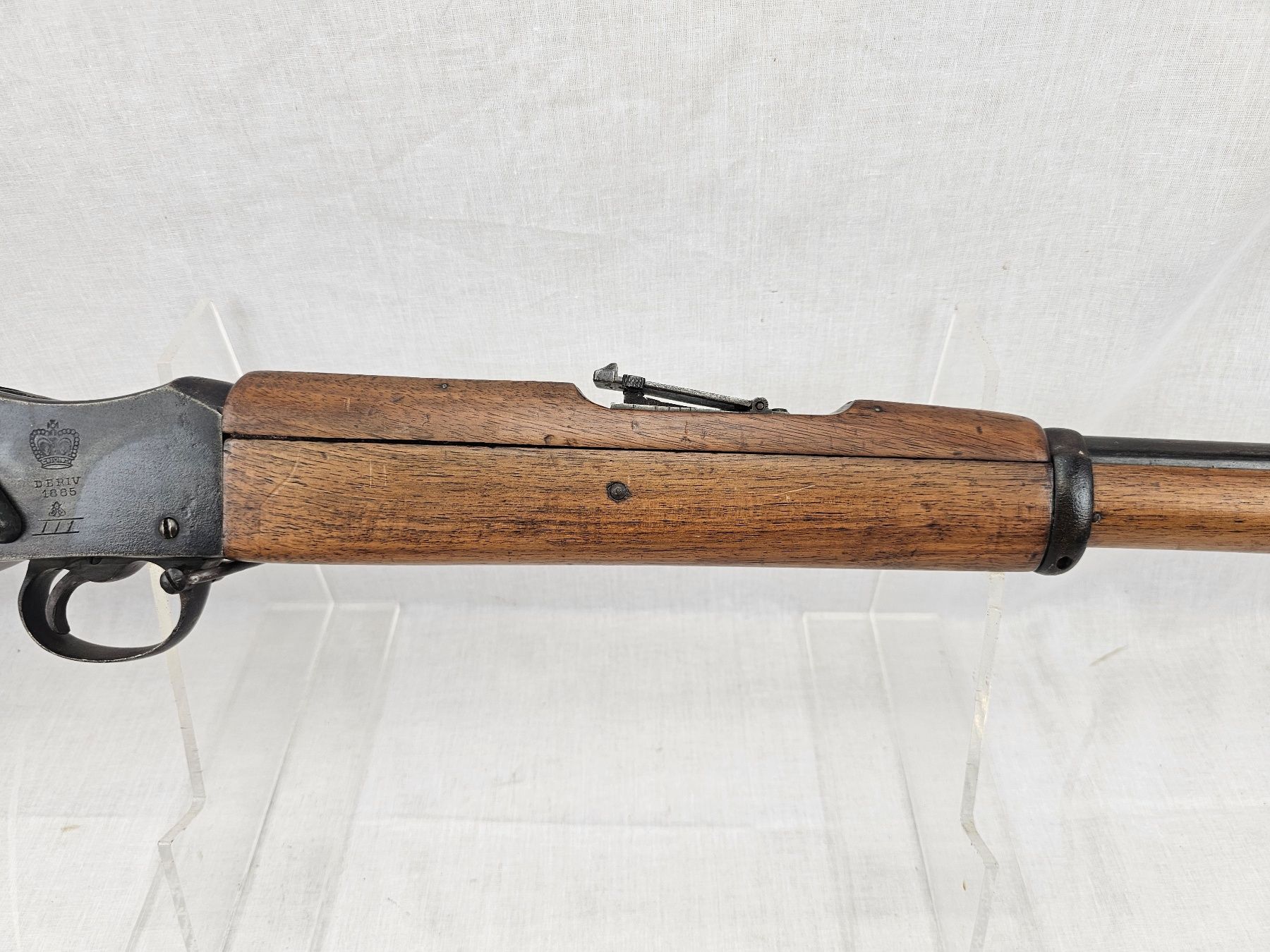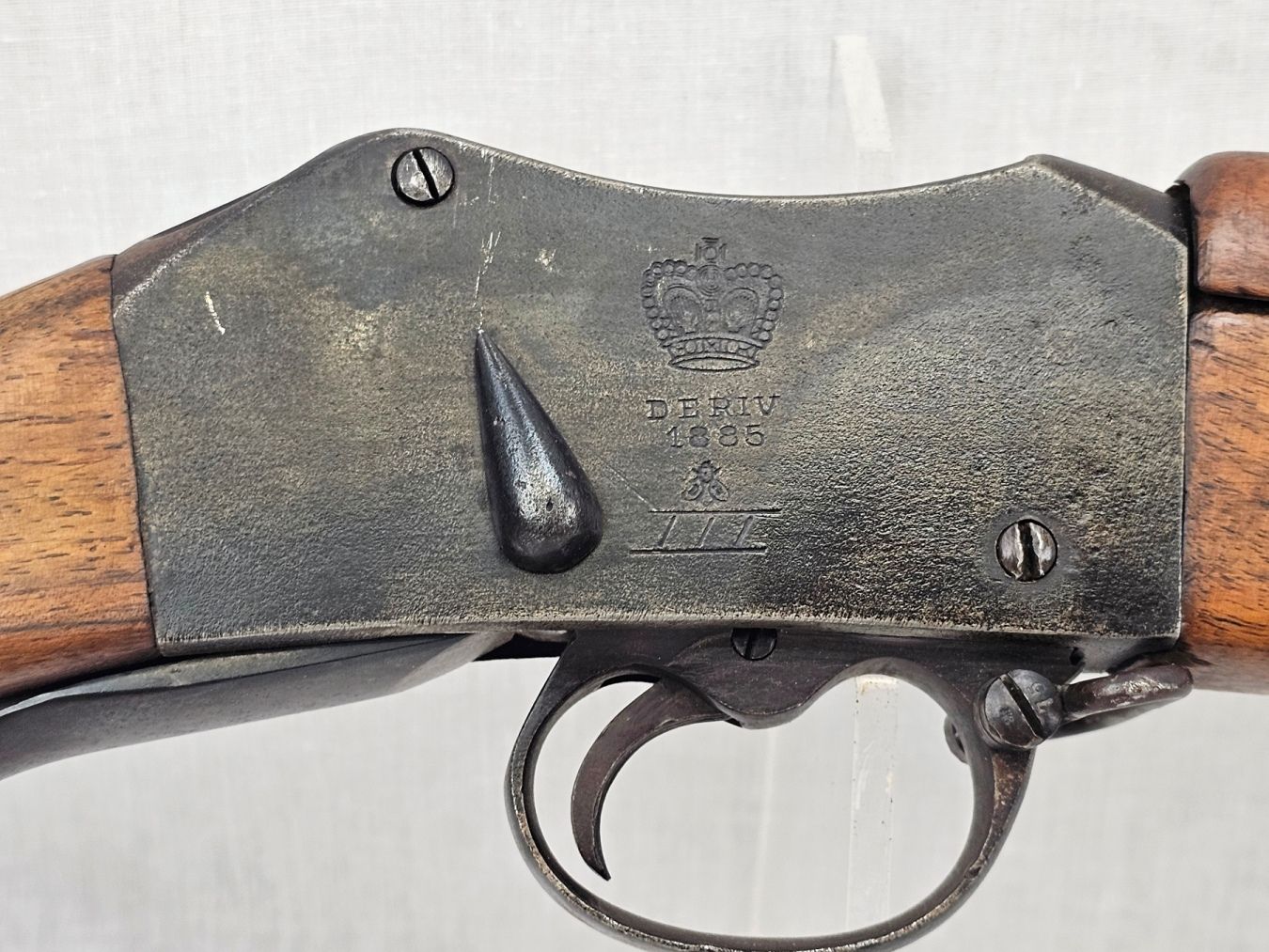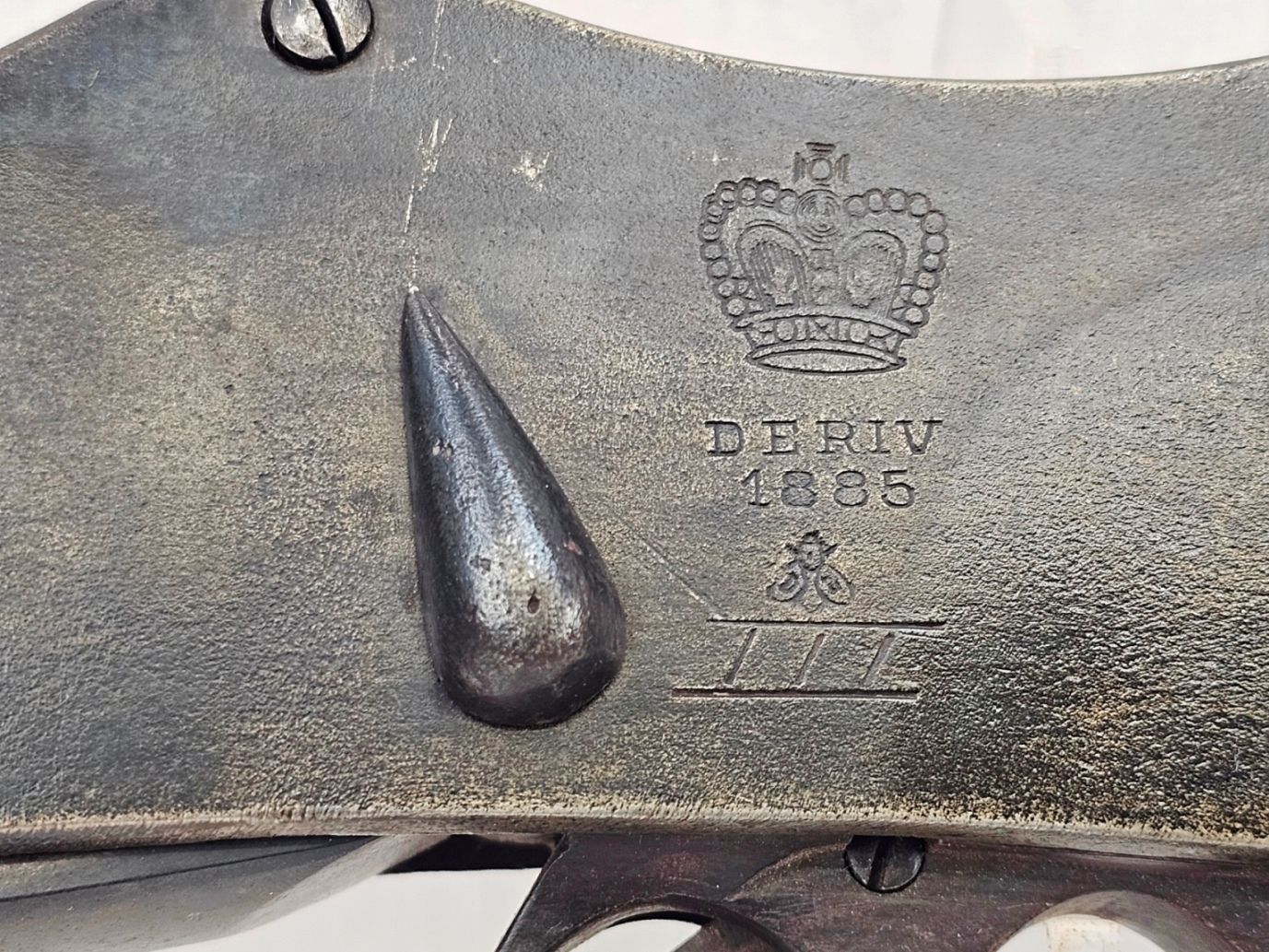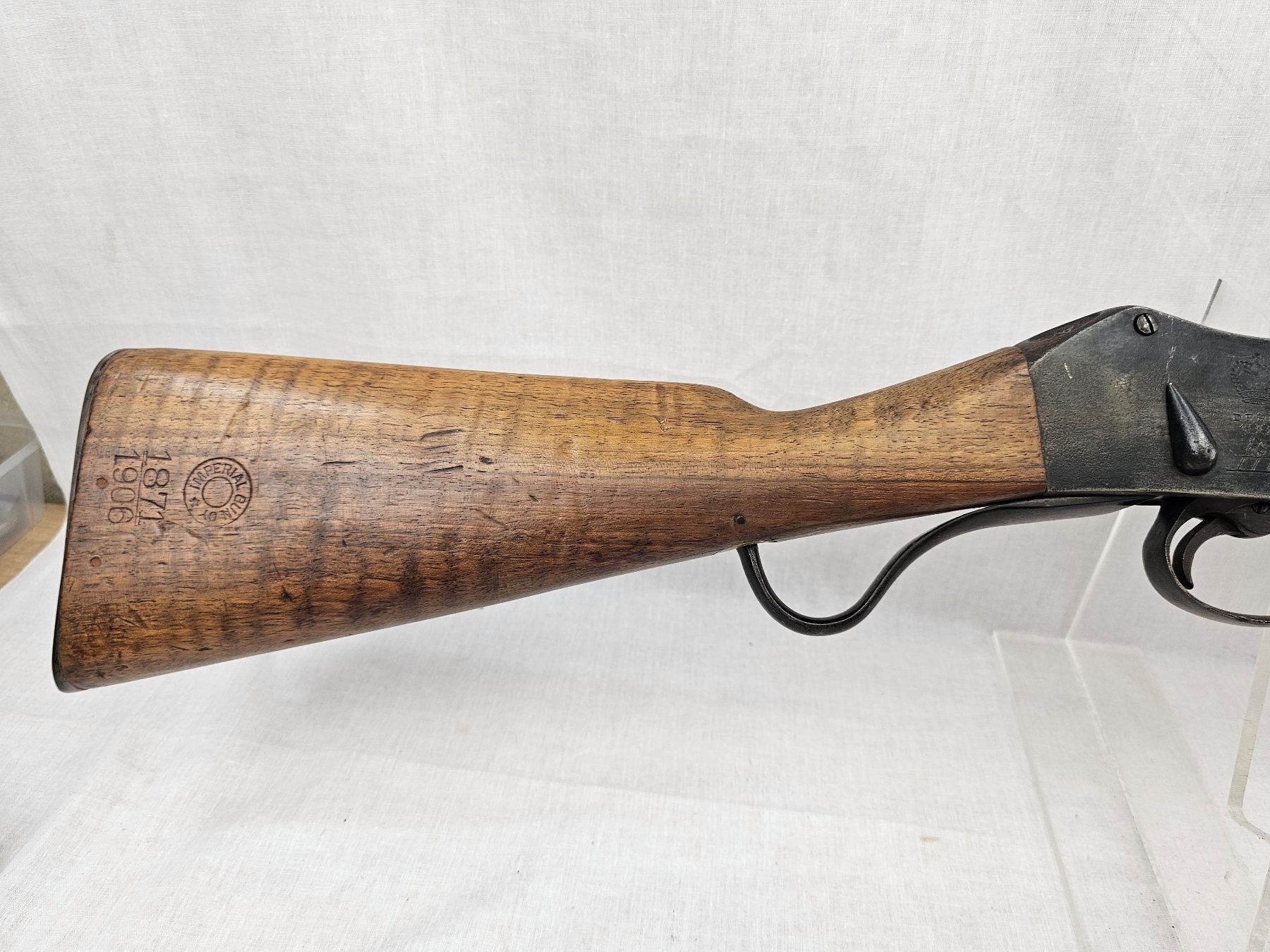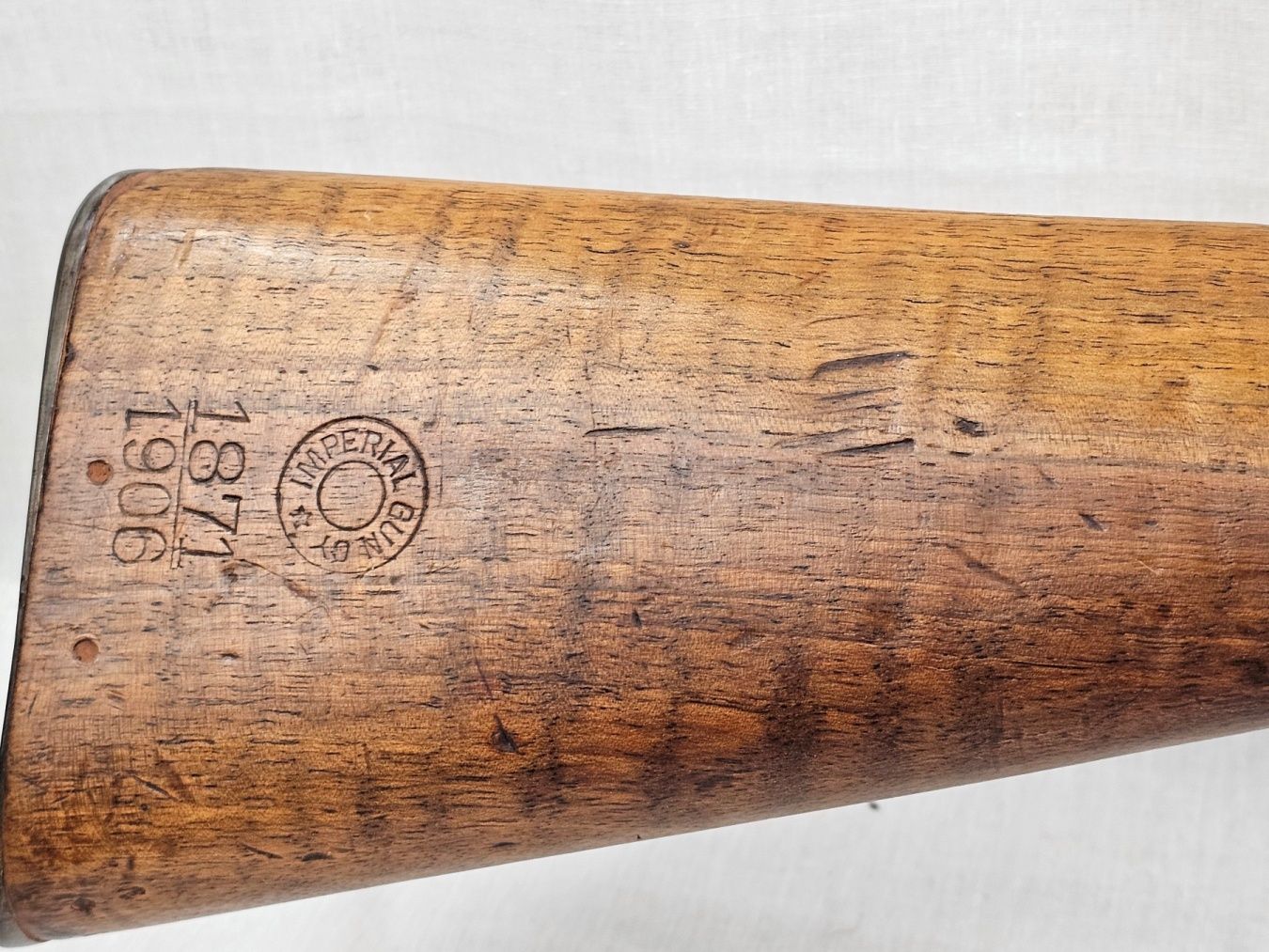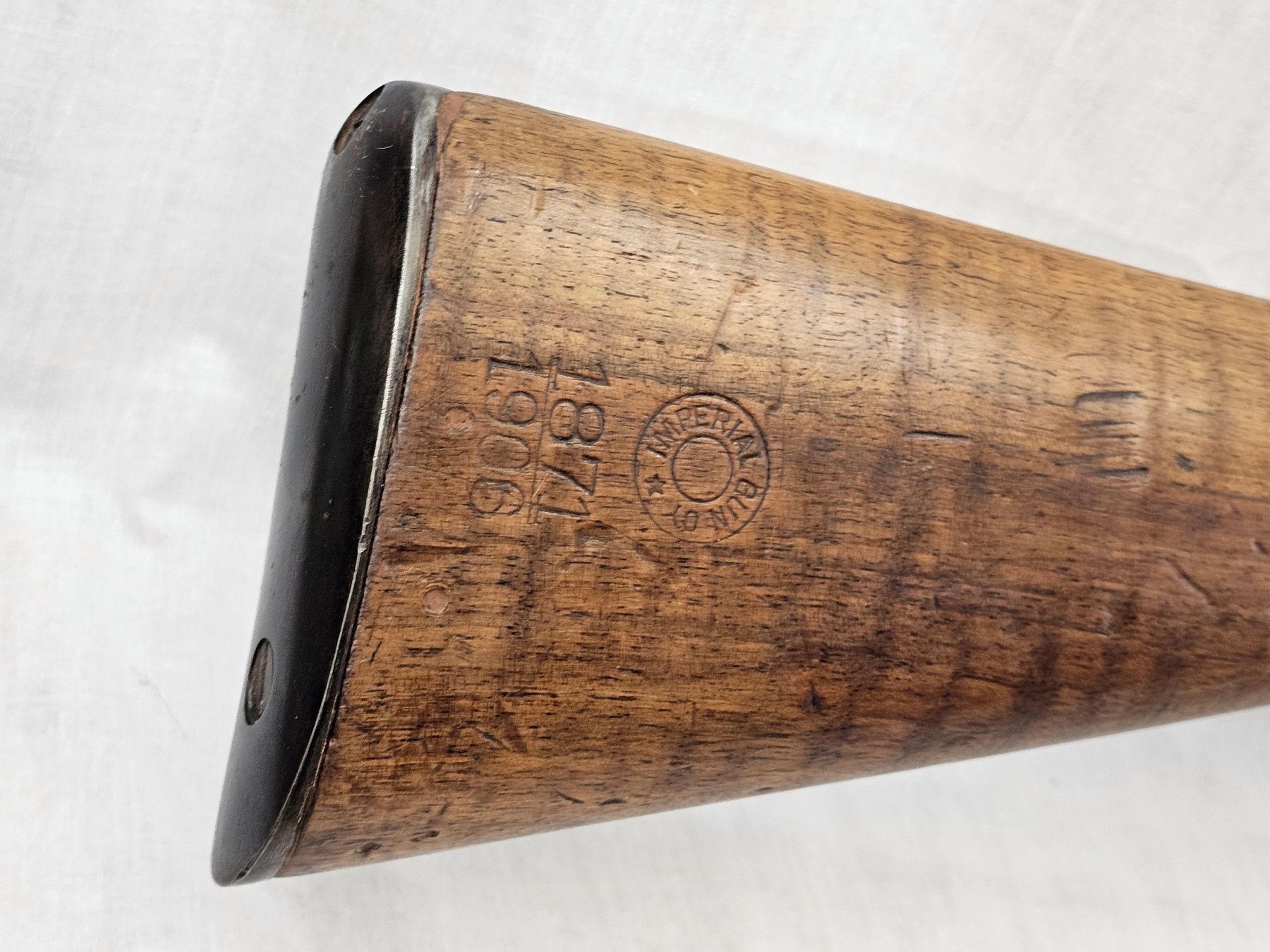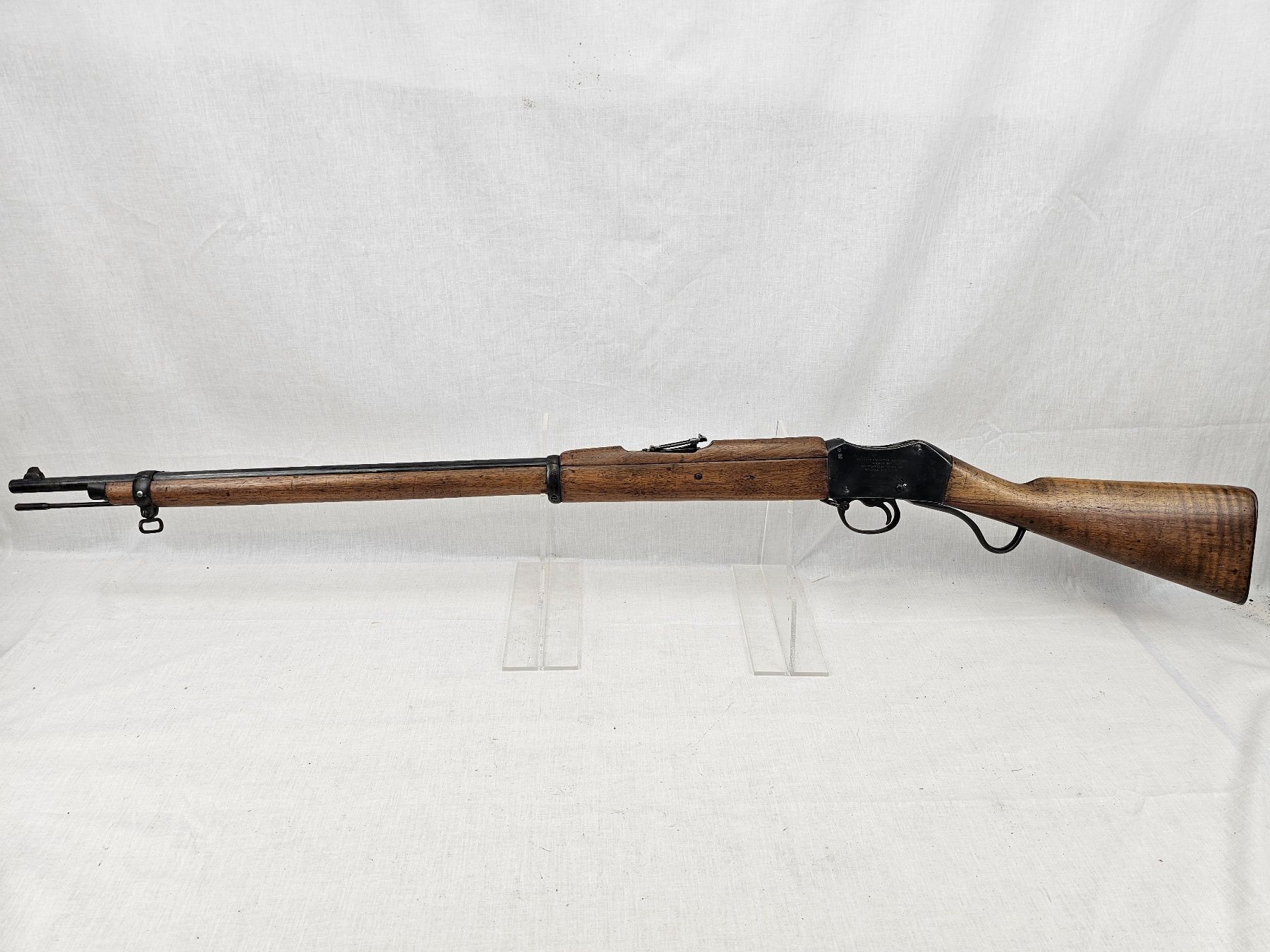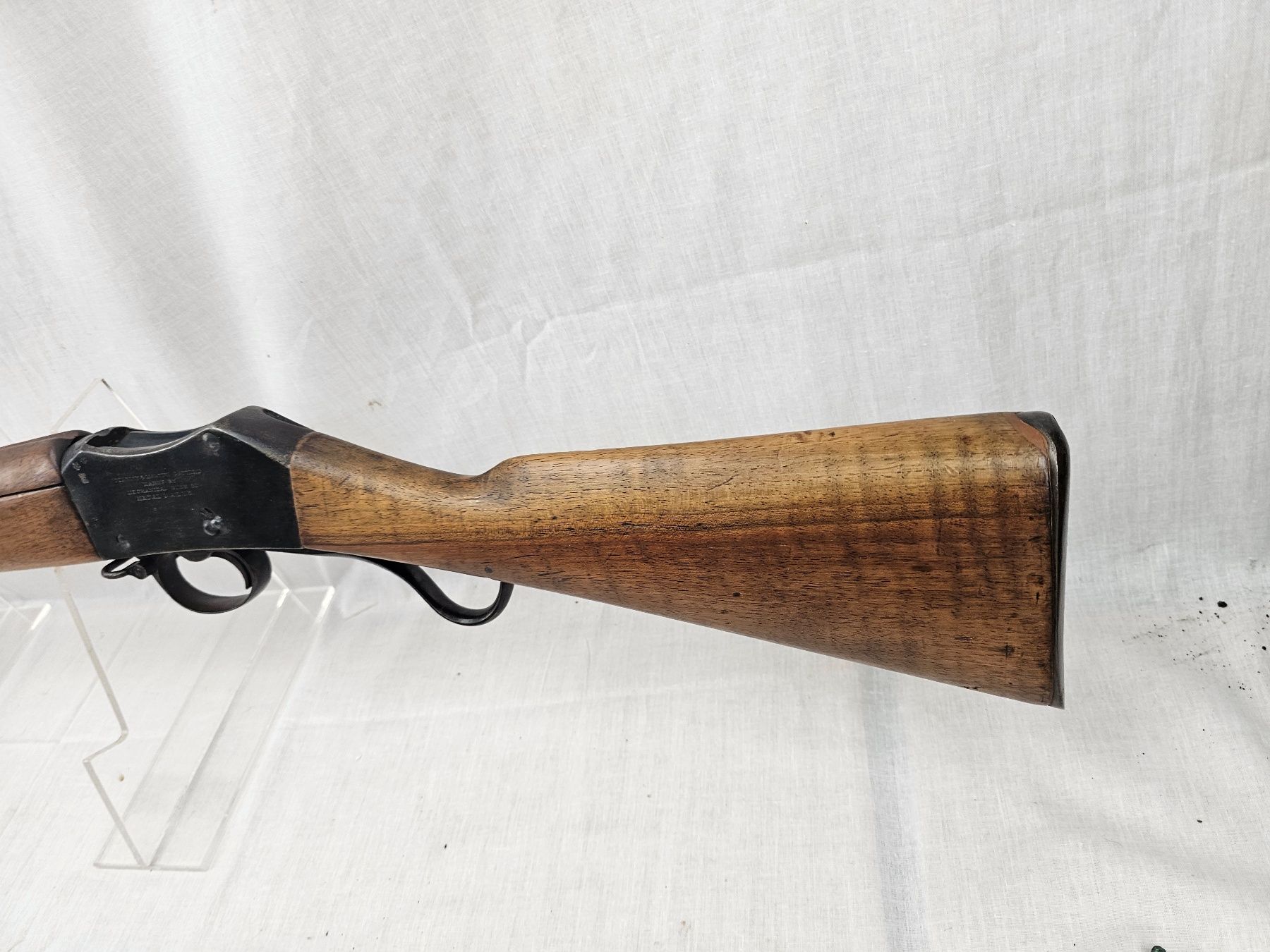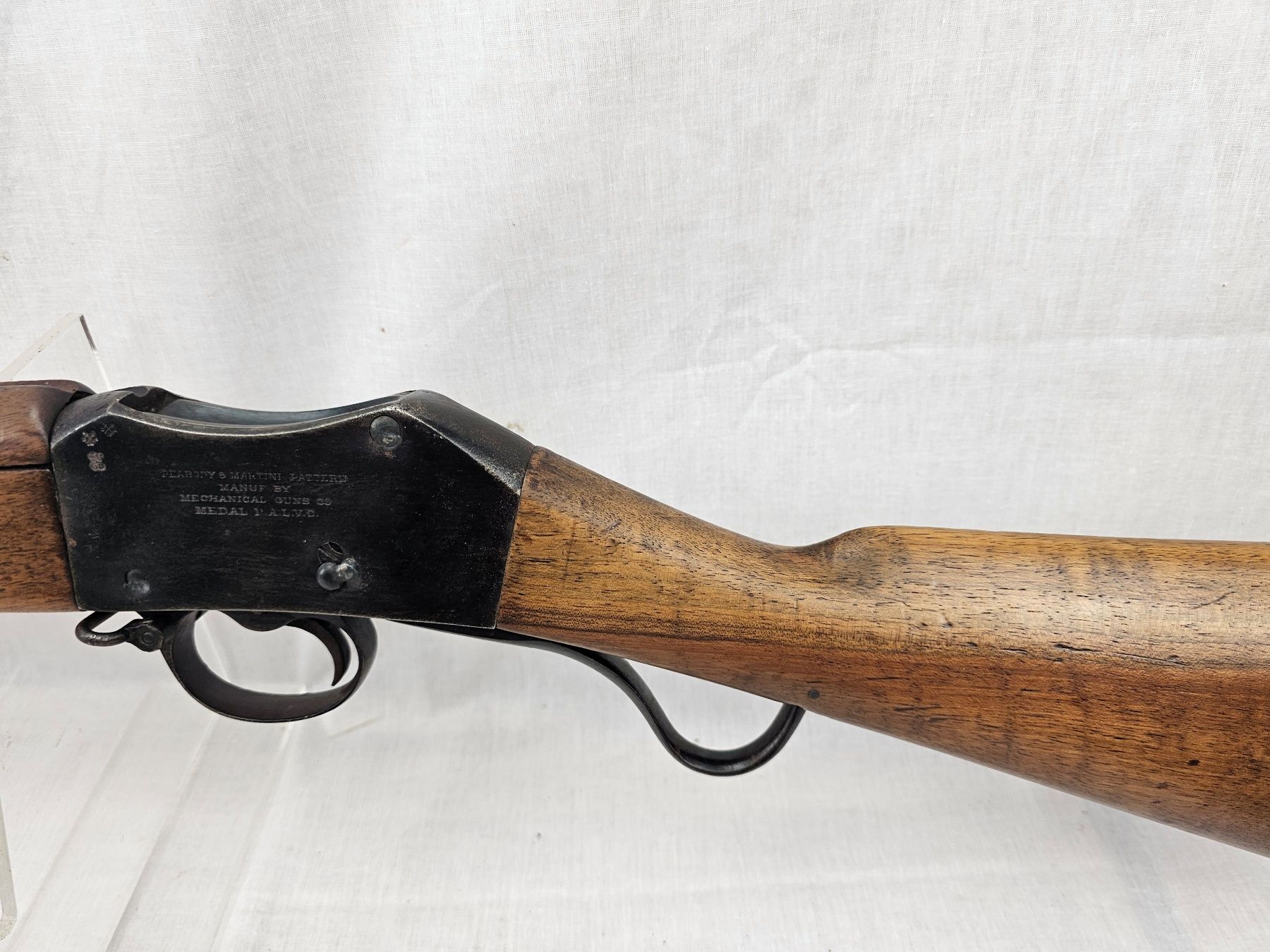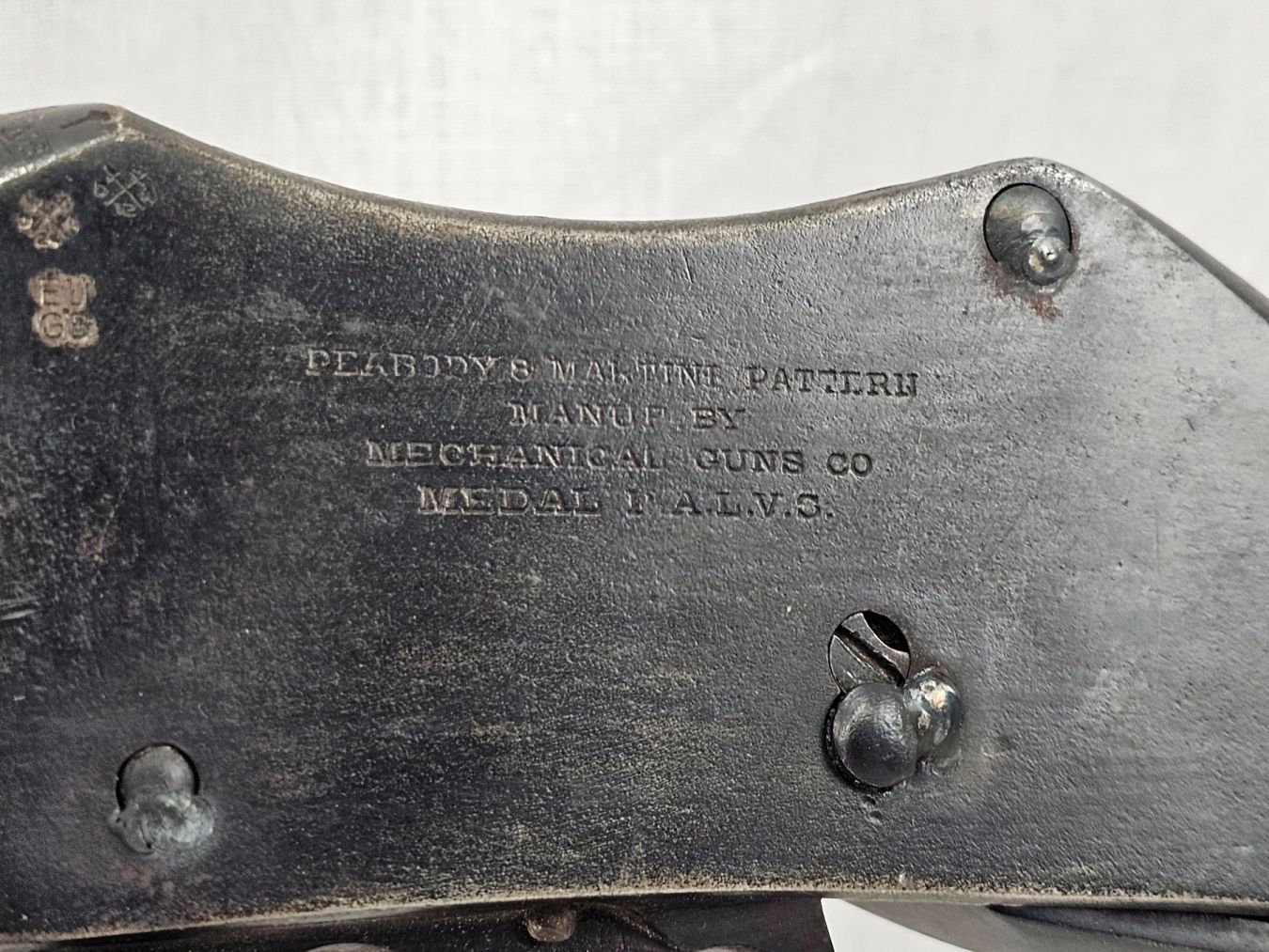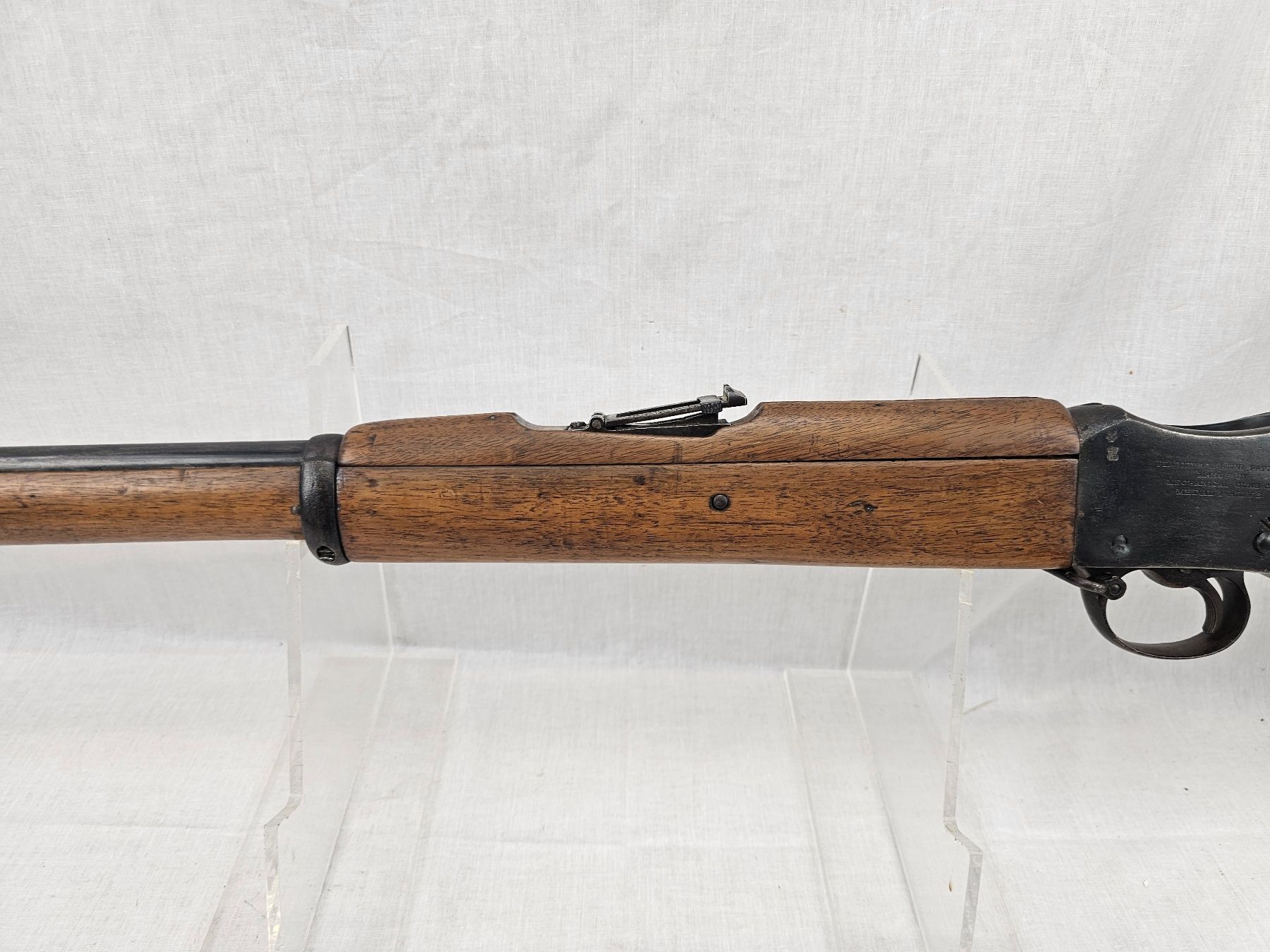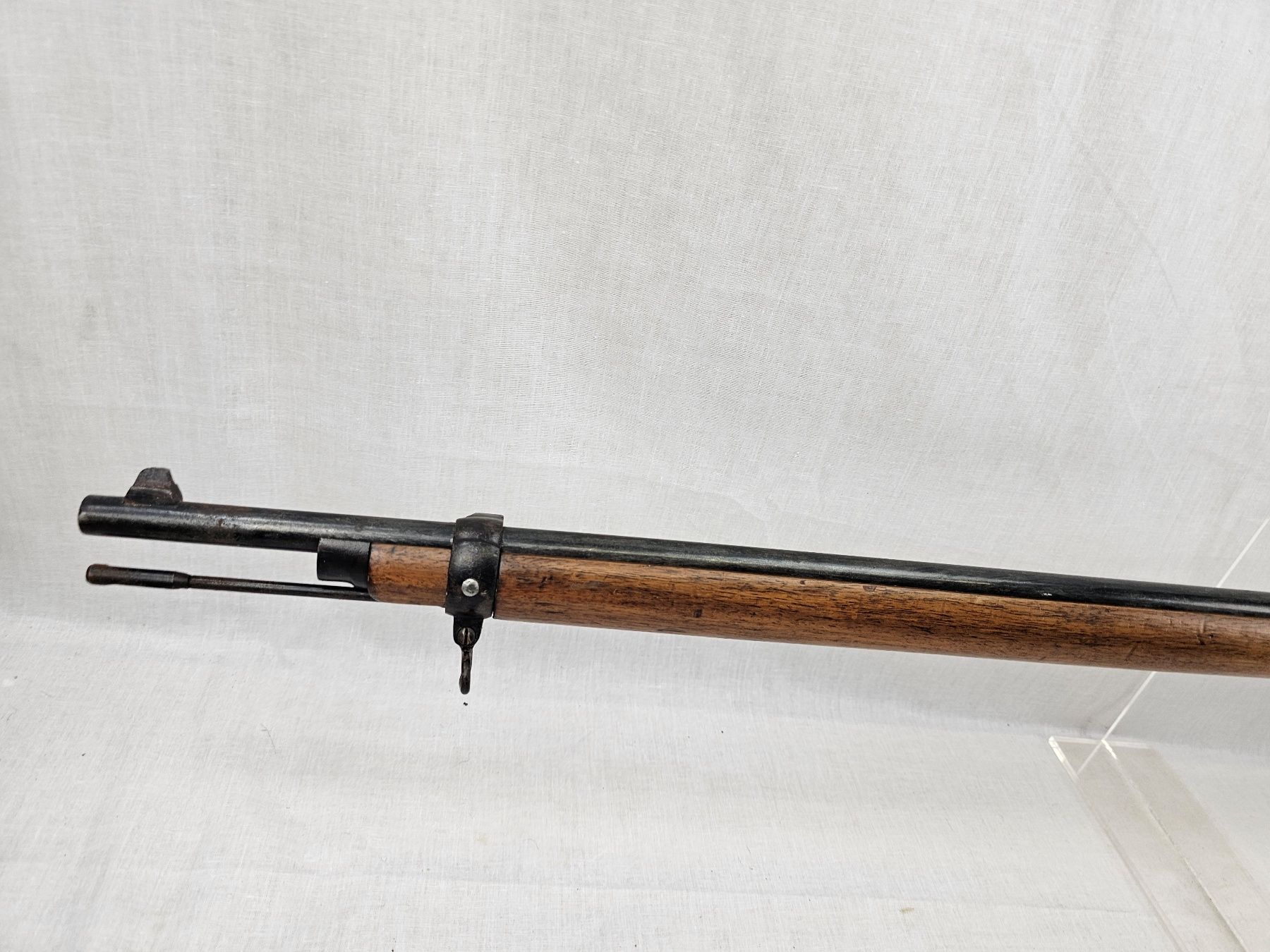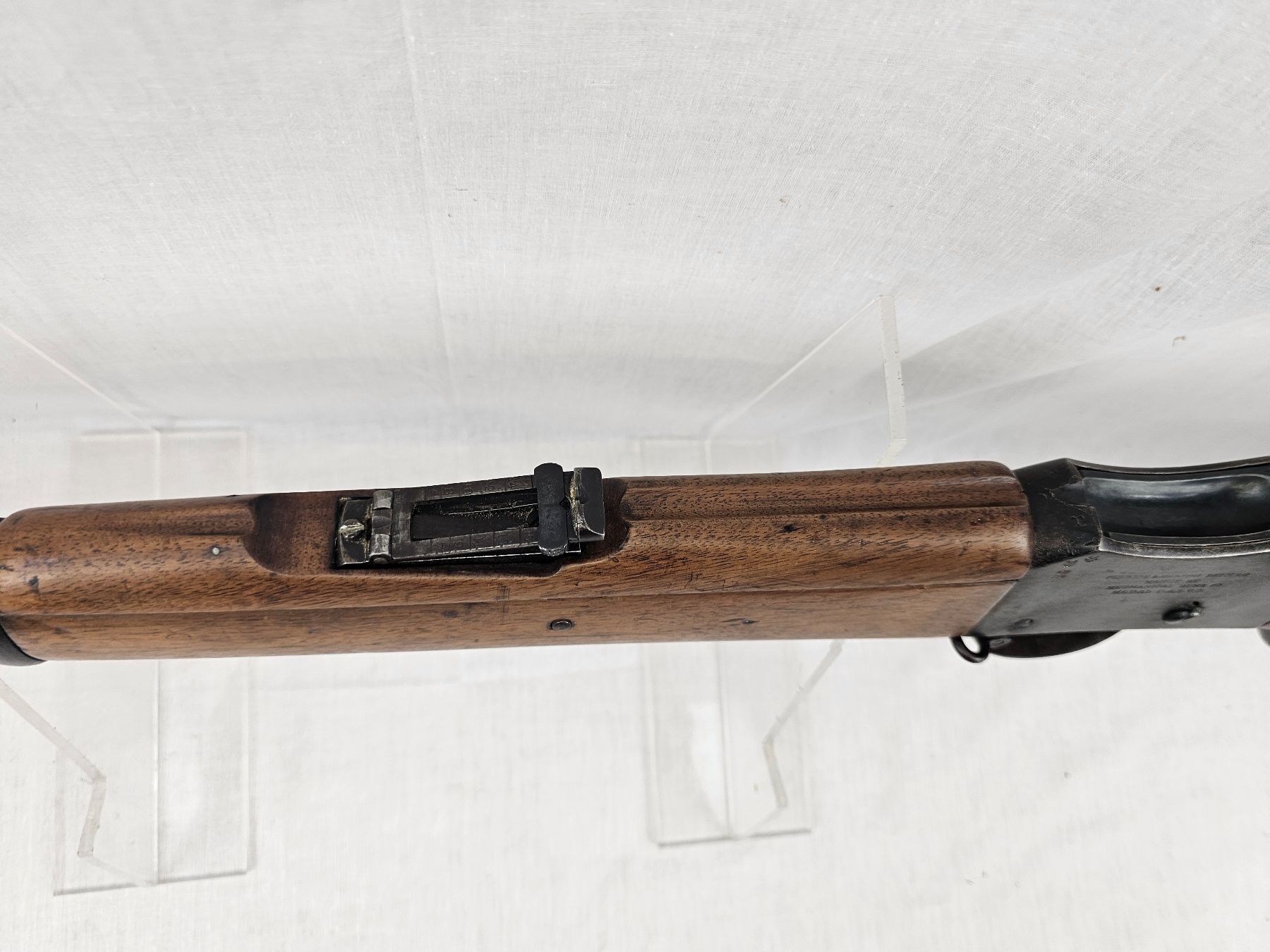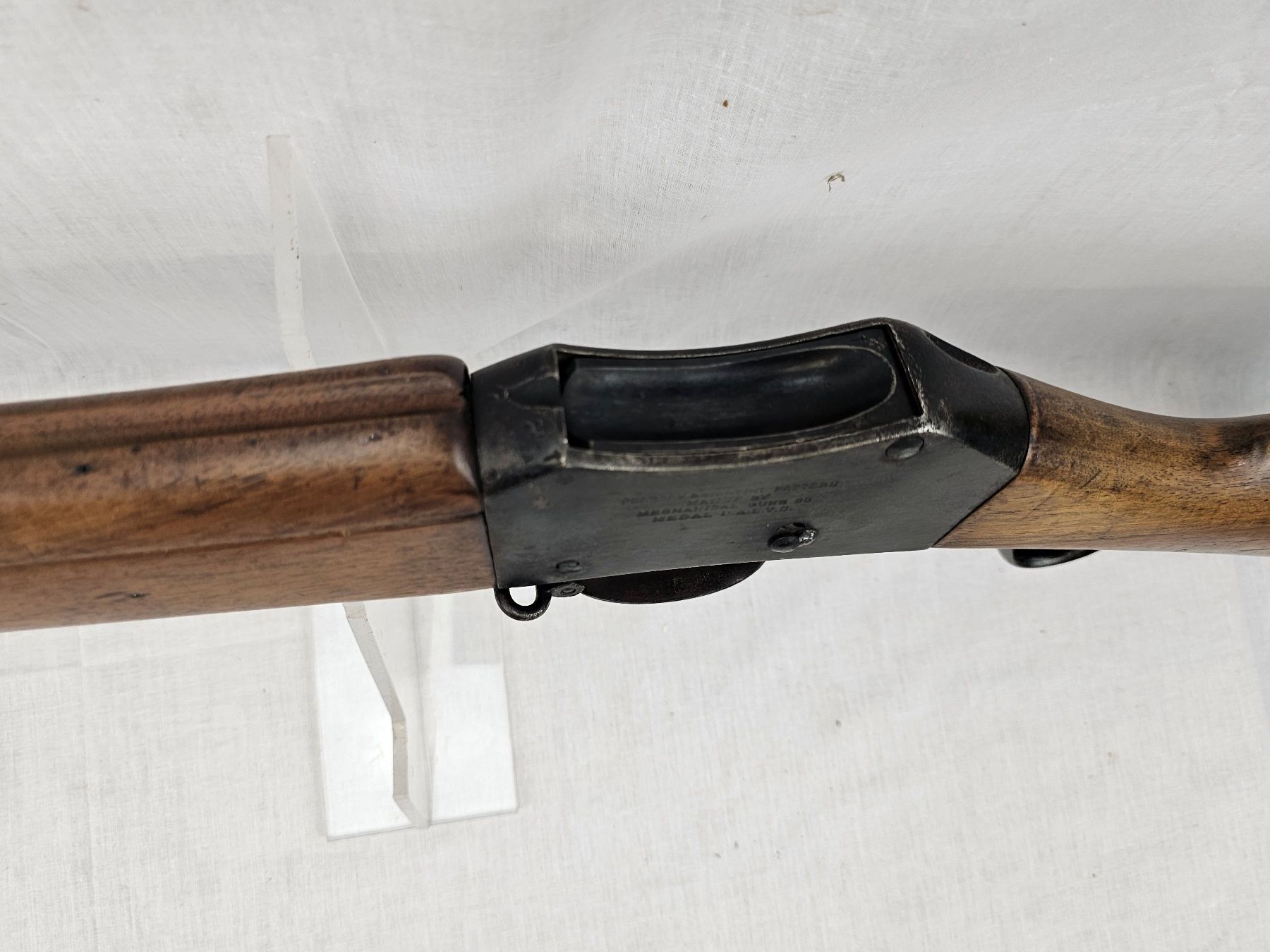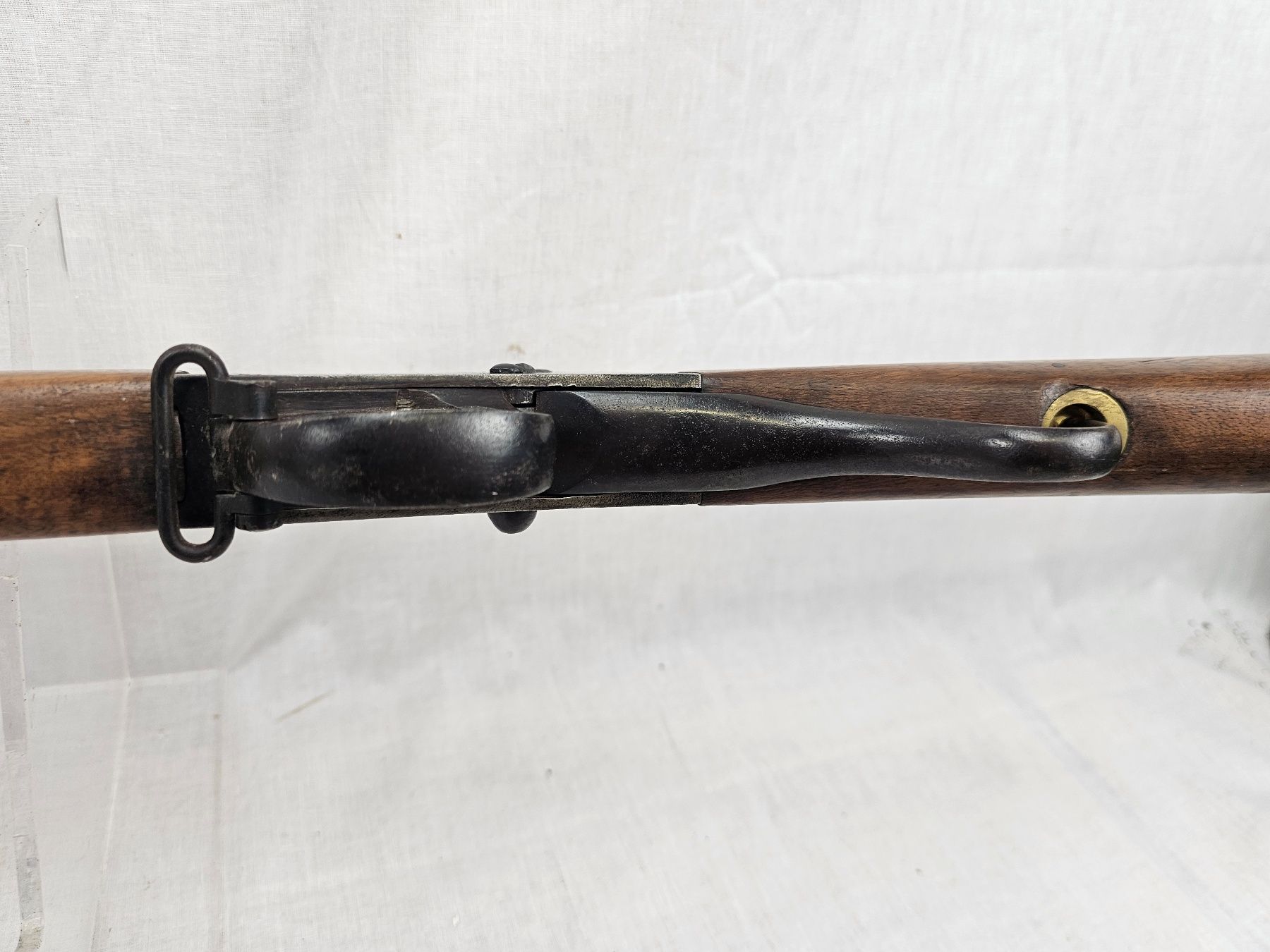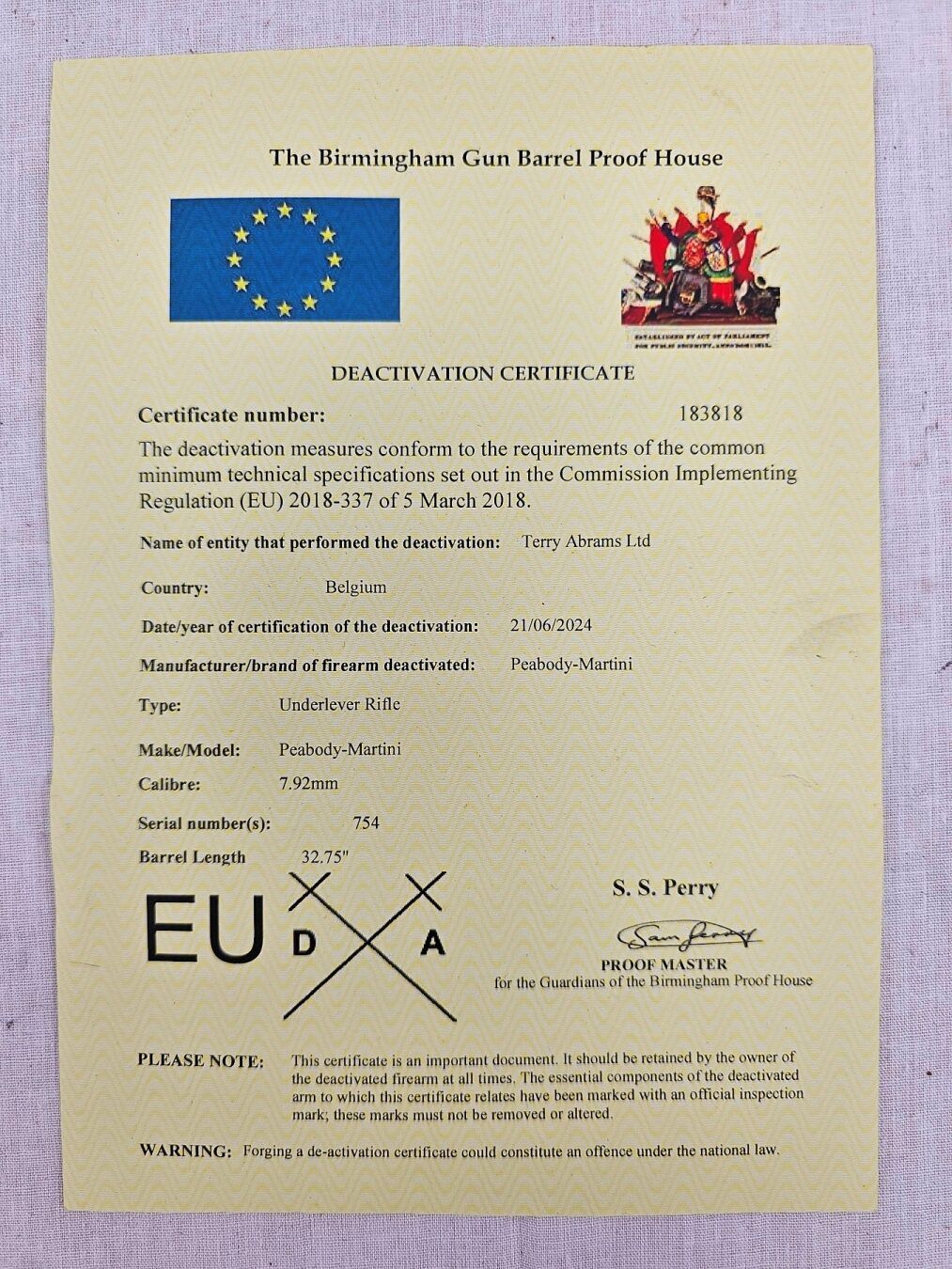~ 1885 Dated Peabody Made Martini-Henry Cal 7.92mm Rifle – Deactivated ~
The Peabody action, developed by Henry O. Peabody in the United States, was a robust, falling-block mechanism.
It was later adapted into the Martini action by Friedrich von Martini, combined with the rifling system of Alexander Henry to create the famous British Martini-Henry rifle, adopted by the British Army in 1871.
The lockplate is stamped on one side with a crown above ‘DERIV 1885 III’ and on the other ‘PEABODY & MARTINI PATENT MANUF. BY MECHANICAL GUND CO. MEDAL I’A.L.V.S.’
The rifle comes with its EU/UK deactivation certificate.
It won’t cock or dry fire, the falling bock doesn’t from and the lever is fixed. The trigger moves on the spring pressure.
The Peabody-Martini-Henry rifle of 1885, chambered in 7.92mm, is an intriguing firearm that combines elements of American, British, and Ottoman design influences. This rifle represents the later evolution of single-shot military rifles as they transitioned from black powder to smokeless powder cartridges.
Weight and Dimensions:
Overall Length: Approximately 49 inches (125cm).
Weight: Around 4kg, depending on the configuration.
Historical Context
Ottoman Empire Connection:
By the 1880s, the Ottoman Empire sought to modernize its military and ordered rifles from multiple international manufacturers.
The Peabody-Martini rifles chambered for 7.92mm (8mm Mauser) were part of an effort to update their arsenal to use smokeless powder, a revolutionary advancement in firearms technology.
1885 Production:
Rifles dated 1885 are believed to be associated with contracts for export, especially to the Ottoman Empire and other regions where the demand for updated military arms was high.
These rifles were likely produced or modified for compatibility with the 7.92x57mm Mauser cartridge, a caliber that became standard for many militaries in the late 19th and early 20th centuries.
Chambered in 7.92x57mm Mauser, a high-velocity smokeless powder cartridge that offered significantly improved range, accuracy, and stopping power compared to earlier black powder rounds.
Utilizes a Martini-type single-shot action, a lever-operated falling block mechanism.
The action is simple, durable, and capable of handling the increased pressures of smokeless powder.
Features a long, rifled barrel, optimized for the 7.92mm round to achieve effective range and accuracy.
Barrel Length: Typically around 30 inches, depending on the specific model.
Stock: Made of hardwood, often walnut, with a full-length design for balance and protection.
Metal Components: Steel construction with a blued or case-hardened finish for durability.
Equipped with adjustable rear sights, graduated for long-distance shooting.
Front sight is a fixed post.
Many models included a bayonet lug for attaching a blade, reflecting the military focus of the rifle.
Typically stamped with manufacturer details, date (e.g., 1885), and possibly acceptance or proof marks indicating its intended market (e.g., Ottoman crescent-and-star symbols for rifles destined for the Ottoman Empire).
The Martini action was highly regarded for its ability to handle the powerful 7.92mm cartridge reliably.
Rifles like this were among the first to bridge the gap between black powder and smokeless powder designs, making them an important milestone in firearms evolution.
Likely used by Ottoman forces or other clients of the Peabody-Martini system. These rifles may have seen service in conflicts during the late 19th and early 20th centuries, such as the Balkan Wars or internal Ottoman skirmishes.


